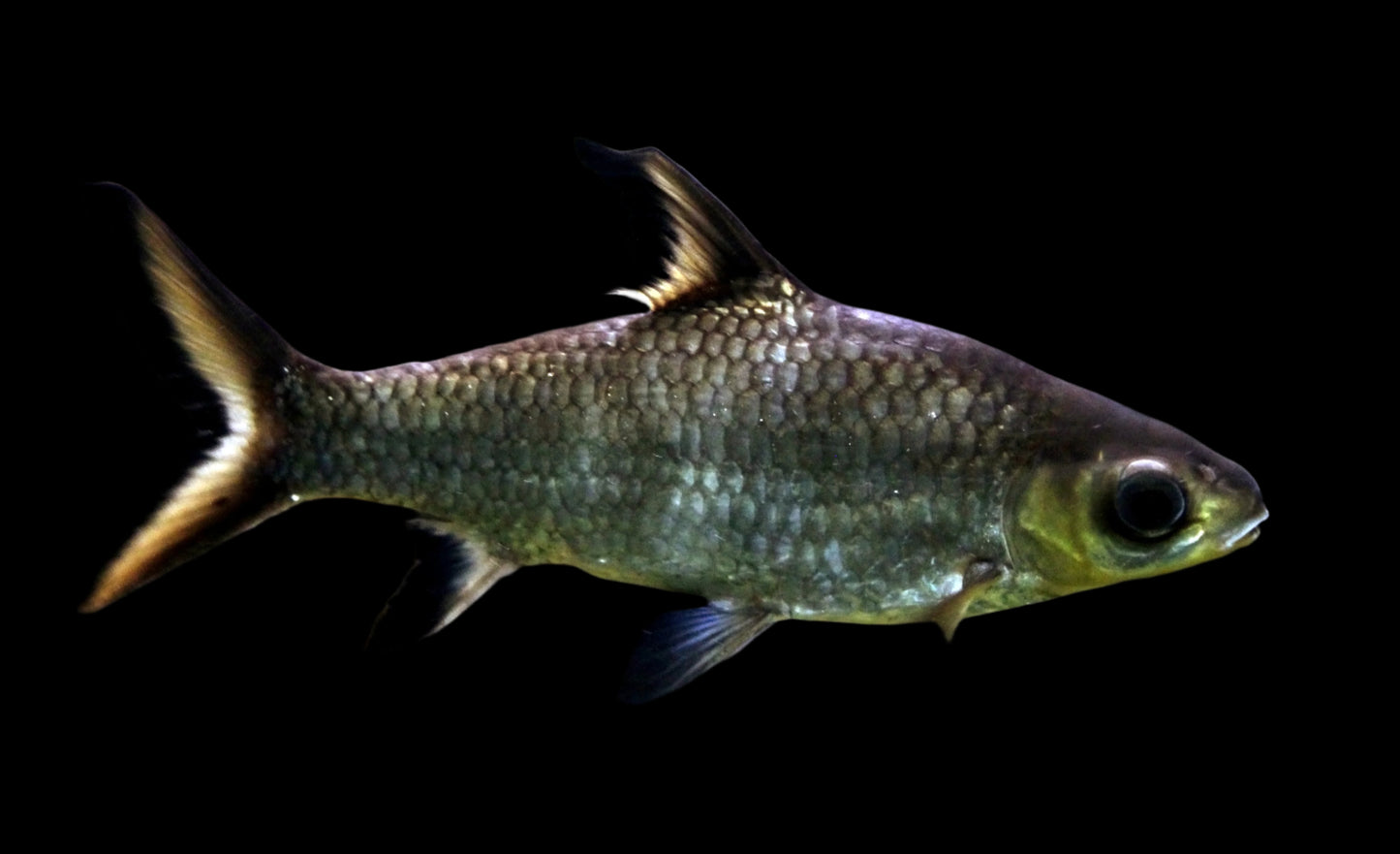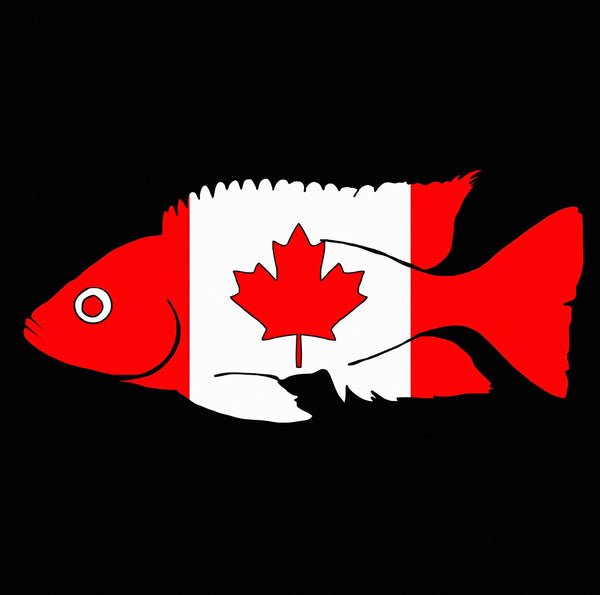SKU:4210
BALA SHARK (Balantiocheilos melanopterus)
BALA SHARK (Balantiocheilos melanopterus)
28 in stock
Couldn't load pickup availability
Common Names: bala shark, tricolor shark
Type Locality: Bandjarmasin, Borneo, Indonesia
Range: Southeast Asia, Malay Penninsula, Sumatra, Borneo
Taxonomic Troubles: Originally described as Barbus melanopterus. The genus is monotypic (this is the only species in it).
Size: 35 cm (14 inches)
Preferred Water Chemistry: Tropical fresh water. Temperature 22 to 28 degrees Celsius (72 to 83 degrees Fahrenheit); pH 6.0 to 8.0; hardness 70 to 160 ppm.
Difficulty: Hardy and very long-lived, but requries a very large aquarium. A 55-gallon tank is too small for a group of these fish.
Tank Setup: Since these active fish must be kept in schools, the tank must be very large, with plenty of open swimming space. They do not usually bother plants.
Feeding: Will take algae, but natural diet is largely crustaceans. Feeds greedily on all types of dry, frozem, free-dried, or live foods.
Breeding: No aquarium accounts, probably due to size at maturity. Bred in great numbers in ponds on Asian fish farms. Endangered in the wild.
Fish Description
A shark-shaped minnow, very graceful and full of energy. Overall shiny silver color with yellow coloration and black markings on the fin.
Notes
Here is another popular fish that shouldn't be--at least not as popular as it is. The "shark" misnomer, plus its very attractive appearance, doom many of these magnificent animals to short, miserable lives in small tanks. As large, schooling fish, these make an impressive display in a 6-foot or larger aquarium.
Their peacefulness, grace, and beauty make them a fantastic choice for a big community tank. Their schooling choreography is as complex as that of danios, but their great size makes the dynamics much more visible--a fascinating thing to watch. Their movements are constant, but jerky, punctuated with quick pauses; they make many changes in orientation and direction, and they move as individuals within the group as much as the group does through the tank.
If you have a large enough aquarium, get at least six of them, preferably more. A single bala is a miserable fish; a small group always seems to be looking for the rest of the school; but a good number of them evolve into a tight-knit society that transcends the individual fishes and takes on an existence of its own.
Like most schooling fishes, balas appreciate some cover--plants or driftwood where they can retreat when startled--but their tank should be mostly open space, as they will spend almost all of their time out in plain sight.
Though, like any fish, they will eat any other fish small enough to swallow, their relatively tiny mouths and totally non-aggressive nature make them ideal candidates for community setups. They are one of the few large fish that can absolutely be trusted with fish even much smaller than they are. They are non-territorial and practice a live-and-let-live philosophy. There is nothing wrong with getting a group of tiny individuals to grace a medium-sized community tank, with the intention of moving them to a larger aquarium as they grow. Make sure, however, that you will have that larger tank, and that it isn't simply one of those things you plan on getting around to.
Reports on their speed of growth are contradictory, but we have seen 3-inch specimens grow to 8 inches in a year. One final bit of advice: cover the tank securely. If there is a gap in the cover, they will find it and jump out. Yes, all fish will jump, but these guys really jump!
https://www.tfhmagazine.com/articles/freshwater/balantiocheilos-melanopterus
Share


